All about the Dreniz geomembrane
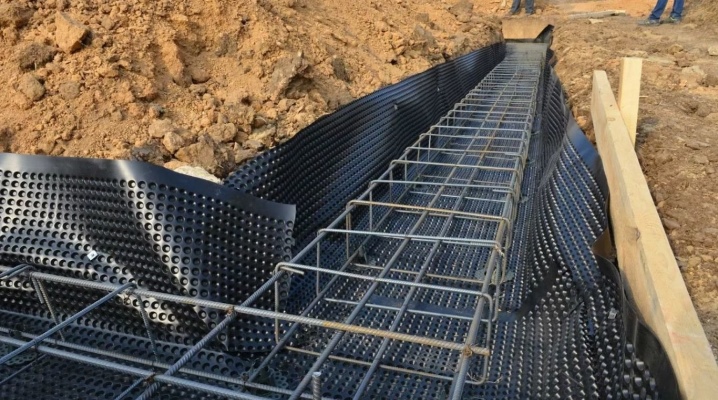
Specifications geomembranes "Dreniz" are of great interest to professional builders and private buyers. Among the obvious advantages of this material is its versatility. - strengthening of the foundation, drainage shell and other options for using a protective coating make it indispensable in private and industrial construction of buildings. It is worth learning more about how the Dreniz geomembrane is properly mounted and what it is.

What is Dreniz?
Geomembrane "Dreniz" - multicomponent material of a new generation with a pronounced characteristic relief. It is a membrane based on cellular PVC, supplemented with a layer of a special textile fabric. A geocomposite protective coating of this type can be combined into large structures using moisture-resistant bitumen-based mastics. Production of products under the trade name "Dreniz" carried out according to specially developed specifications.
The insulating layer of the geomembrane is created from vinyl plastics, which receive a cellular structure under high pressure.
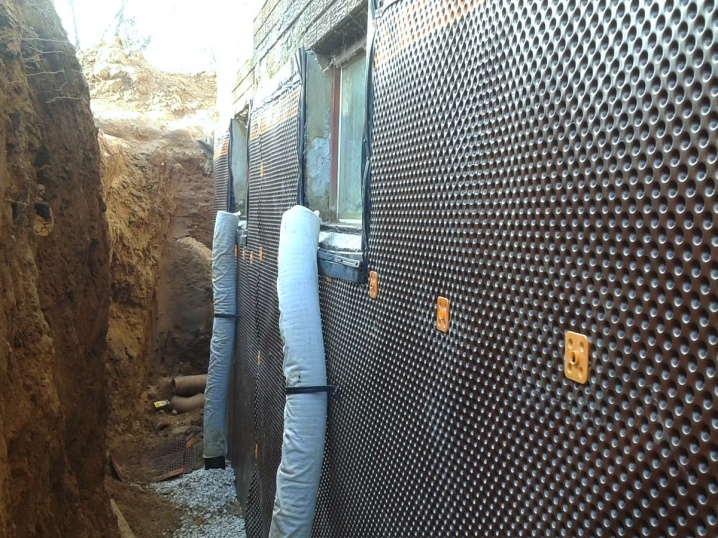
The non-woven fabric is made of durable, tear-resistant, needle-punched polyamide. This material is a Russian development, in terms of characteristics, it is not inferior to foreign counterparts. With his help protection of foundations and plinths from the effects of atmospheric or underground moisture is carried out.
There are several types of Dreniz geomembranes:
- "U" - reinforced version for deepening to more than 15 m;
- PF, without geotextile filtering layer;
- regular, two-layer.


Properties and characteristics
The profiled geomembrane "Dreniz" has a unique set of properties. She is characterized by high level of waterproofing, increased tensile and tensile strength.
The material is elastic, but not subject to shrinkage under the influence of moisture or other external factors.
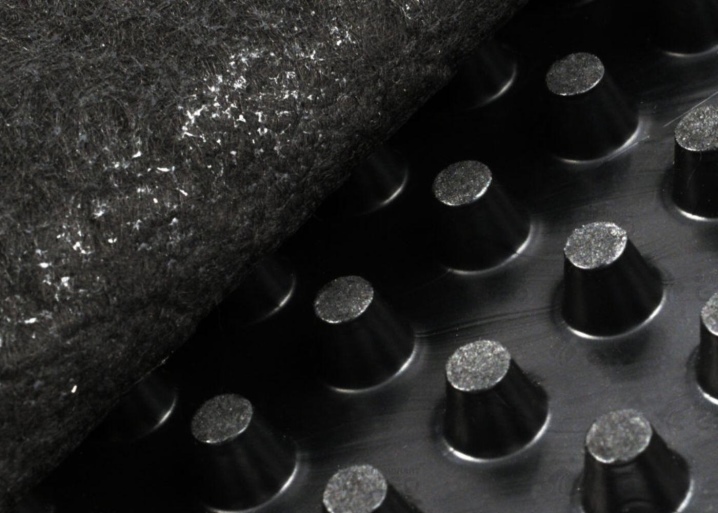
Roll connection of PVC with geotextile is achieved by an adhesive method, the resulting structure is resistant to the effects of rodents and plant roots, temperature extremes, squeezing, and high temperatures.
Among the main characteristics of the material are:
- drainage capacity - from 1.1 l / s * m2;
- surface density - 60 or 250 g / m2;
- strength - 0.245 MPa in compression, 29.4 MPa in tension;
- weight (approximate) - 1.05 kg / m2.
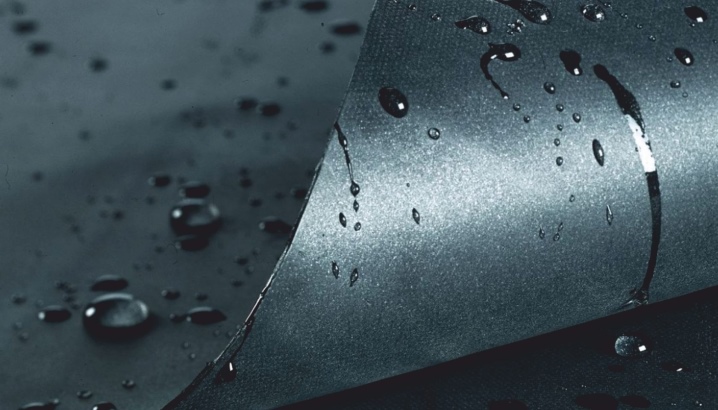
"Dreniz" in rolls intended for a one-time coverage of up to 15 m2 of area. Due to the properties laid down by the manufacturer, it can be used to provide fast and effective drainage of even large-sized structures for underground and surface purposes.
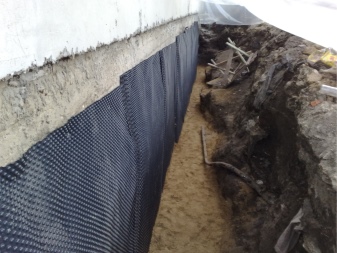
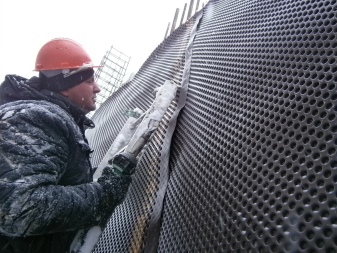
Where is it applied?
The use of the Dreniz geomembrane implies several directions at once, in which this material can be useful. The drainage shell complements and enhances the properties of the waterproofing and drainage system. Let's note the most popular directions of its use.
- Protection of the foundation and basement of structures, buildings, and other objects from the effects of groundwater. The geomembrane provides effective moisture removal and reduces the negative consequences of the rise in the level of underground liquid.
- Drainage of building and landscape structures.These can be parking lots, paths and driveways, operated roofing, floors in basements. Here, such an addition provides a more efficient moisture removal.
- Protection of objects where it is necessary to replace standard materials and technologies with more economical ones. First of all, this applies to classic waterproofing with wall drainage. This is where the membrane material will provide the best manifestation of its properties.
- Replacement of coating and pasting waterproofing. Due to its greater depth, Dreniz copes with the tasks much better than the usual mastics and waterproofing.
- Protection of existing waterproofing from damage. It turns out to be not subject to mechanical damage. In addition, the cellular structure of the geomembrane retains air access, which provides additional thermal insulation and ventilation of structures.
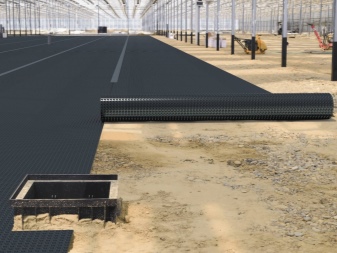
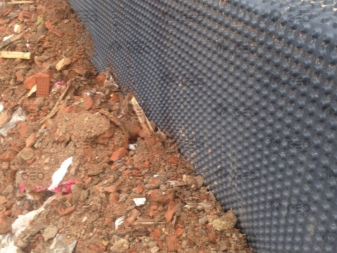
These are the main areas of application. It is worth noting that, depending on the type of material, the scope of use of the Dreniz geomembrane may vary.
Installation tips
Geomembrane "Dreniz" is mounted in layers in combination with a standard drainage and waterproofing system. Its installation is carried out simultaneously with the laying of tubular drains. Then it is placed on the surface of the soil (with a filter layer to the soil). In this case, the polymer part of the sheet turns out to be connected to the walls or floor. The geomembrane is laid in rows: vertically and horizontally, in a flattened form.
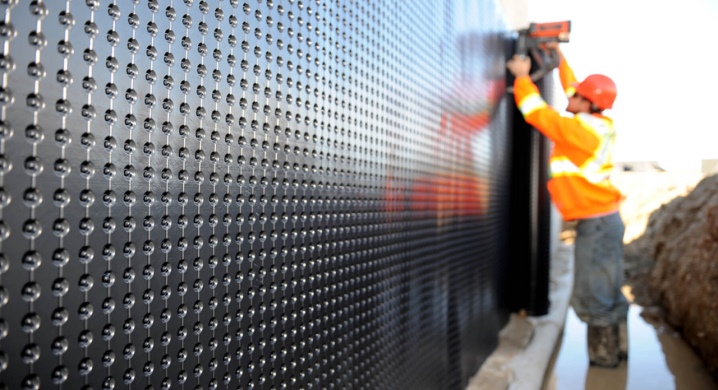
It is worth considering the following points:
- "Dreniz" is used in conjunction with pasting insulation or replaces it;
- in the wall-mounted application, the membrane is laid at a maximum depth of 8 m;
- it is possible to fix the protective layer at any type and level of groundwater.
When draining wall surfaces work is carried out from the bottom up. Sheets of material are stacked directly on top of each other (overlapping, along a special contact strip). Its width is 15 cm; for installation, a hydrophobic composition is used that does not allow moisture to pass through. When joining, the layers of material are separated, the seam in the rows is displaced. On the wall, the geomembrane is fixed with bitumen mastic or hydroglass insulation (in a disposable version); when protecting the foundation, it is possible to use dowels, followed by fixing with chemical-based insulating compounds.

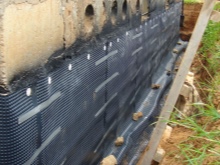
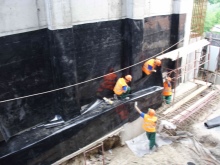
Ring drainage with the use of a geomembrane, it is carried out to a depth of 5–8 m, the free space is filled with sand with a high filtration coefficient. Wall mounting is prohibited when the trench is flooded with water. It is first drained, and then "Dreniz" is fixed on the surface.
How to properly mount the geomembrane, see below.













The comment was sent successfully.